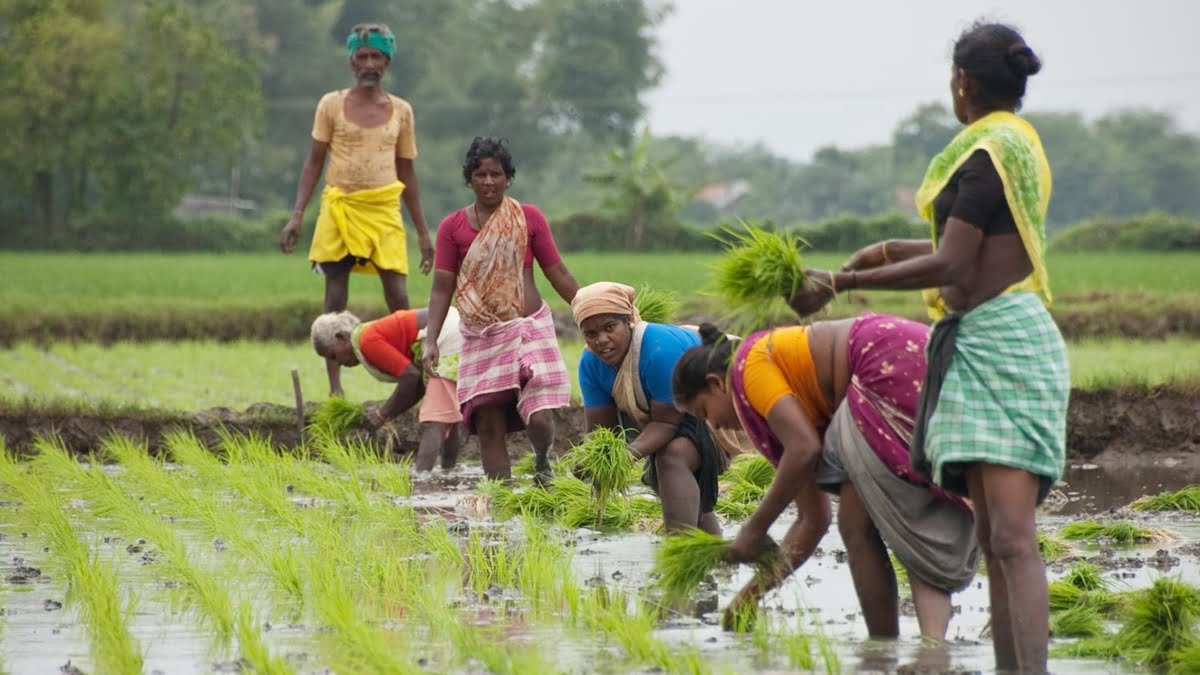The “Global Risks Report 2020” published by World Economic Forum lists climate change as the top global threat over the next decade while the Global Climate Risk Index places India at the fifth position among the countries most vulnerable to the climate change crises. The past few years have seen an increase in awareness of the impacts of climate change on the Indian agricultural ecosystem both among policymakers as well as the general population. The increased emphasis on sustainable living is an example of this shift.
Unfolding Crisis
However, as data indicates, despite continued efforts at sustainable living and life choices, India’s agricultural productivity is in the danger of getting severely impacted. Issues such as greenhouse gas emissions, increased frequency of extreme weather outcomes, average annual temperatures taking a northward shift and rising sea levels are only some of the factors that could adversely impact India’s agricultural sector. Central to the food security of the nation, any ripple in this sector is bound to cause a domino effect in the whole economy. According to the Economic Survey, agriculture, at present employs around 49 percent of the Indian workforce while 16 percent of our GDP comes from agricultural and its allied activities.
Issues such as greenhouse gas emissions, increased frequency of extreme weather outcomes, average annual temperatures taking a northward shift and rising sea levels are only some of the climate change factors that could adversely impact India’s agricultural sector.
In absence of any adaptation and mitigation measures, the yield of Rabi and Kharif crops are expected to go down by 12 and 15 percent respectively thus impacting self-sufficiency in food production and pulling down the income of the farmers and the rural population of India.

In addition, the COVID-19 pandemic’s impact on the agricultural sector of India has also been devastating. The lack of availability of labour and transportation facilities and overall shutdown of markets are some of the ways in which the Indian farmers have been affected. Shortage of migrant workers has also led to a sharp hike in daily wages for crop-harvesting. This, coupled with the closing of interstate movement has reportedly led to huge losses for the farmers
Indian agriculture remains largely dependent on monsoon with around 52 percent of the agricultural land non-irrigated. This has left it uninsured against the vagaries of weather. The pattern of the Indian monsoons is expected to alter in the next decade both spatially and temporally with a change in arrival and departure dates, increased intensity of rainfall as well as larger breaks between bursts of monsoon. This is sure to change the sowing and harvesting cycles for which Indian farmers will have to be prepared in advance. An economic survey indicates that non-irrigated areas will face a greater effect of climate change-related impacts. Higher temperatures brought about by climate change will encourage weed and pest proliferation, impacting the nutritional status of crops.
Also read: How Is The Covid-19 Lockdown Affecting Farmers?
Way Forward
One way the farmers can be helped to come out of this crisis is by creating an online transaction system that could help them buy, sell or exchange their crops and related material such as seeds and fertilizers with the nearby villages so as to earn and generate a flow in the market.
Enlarge the area under irrigation with the use of efficient irrigation techniques such as drip and sprinkler irrigation. Seeing the current situation of COVID-19, sensors can also be used to water the field so that there is no physical contact with anyone.
Enlarge the area under irrigation with the use of efficient irrigation techniques such as drip and sprinkler irrigation. Seeing the current situation of COVID-19, sensors can also be used to water the field so that there is no physical contact with anyone.
We can grow border crops like moringa which needs one-time investment and gives recurring income throughout as its fruit, flower and leaves can be used for multiple purposes. It also protects the crops, having no maintenance cost.
Farmers could be encouraged to adopt more sustainable modes of agricultural production such as intercropping, mixed-cropping, mixed farming and crop rotation. Traditional farming systems such as organic farming, zero-budget natural farming, etc. use only minimum inputs and are less dependent on external factors such as irrigation, fertilisers, pesticides, etc. These need to be encouraged through appropriate awareness programmes and subsidies for farmers who adopt these techniques.
Also read: Budget 2020: Why Are Feminists Worried About Agricultural Sectors?
It is important to support and fund research on energy-friendly irrigation policies, climate-smart agriculture, use of AI etc., in monitoring plant health. The functioning of agricultural-extension schemes to bring more farmers into its ambit should also be emphasised on.
Design suitable crop insurance models with appropriate crop cutting experiments to insure farmers against the loss caused due to climate change. More farmers need to be brought within the realm of financial inclusion and security benefits. More credit need to be extended to the farmers from institutional sources as the cost of agriculture is only going to increase once when measures are taken to protect the sector against climate change.
Featured Image Source: Development News
About the author(s)
Dr. Surbhi Kumari is a social entrepreneur, researcher, and co-founder of SumArth, working at the intersection of agriculture, gender, and menstrual health. With over a decade of experience in empowering rural and marginalized communities in Bihar, she has pioneered innovations like climate-smart Mushroom Huts and community-run sanitary pad units, reaching thousands of women and farmers.




